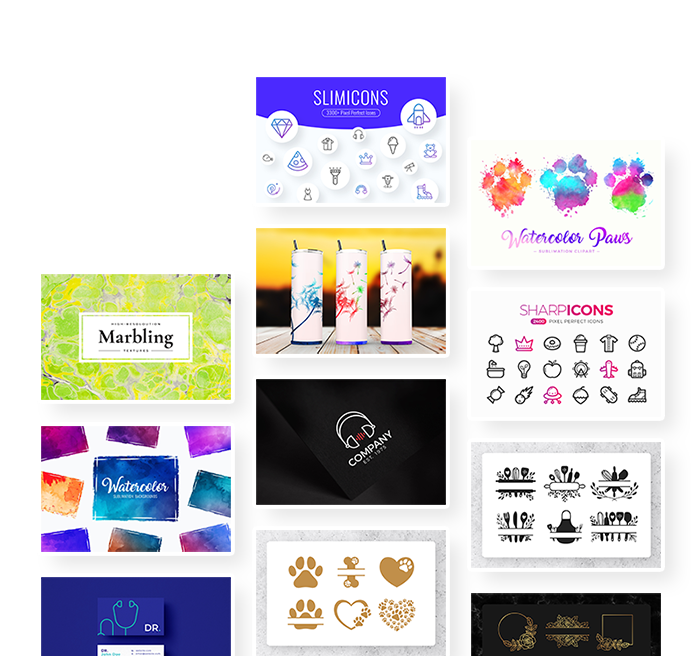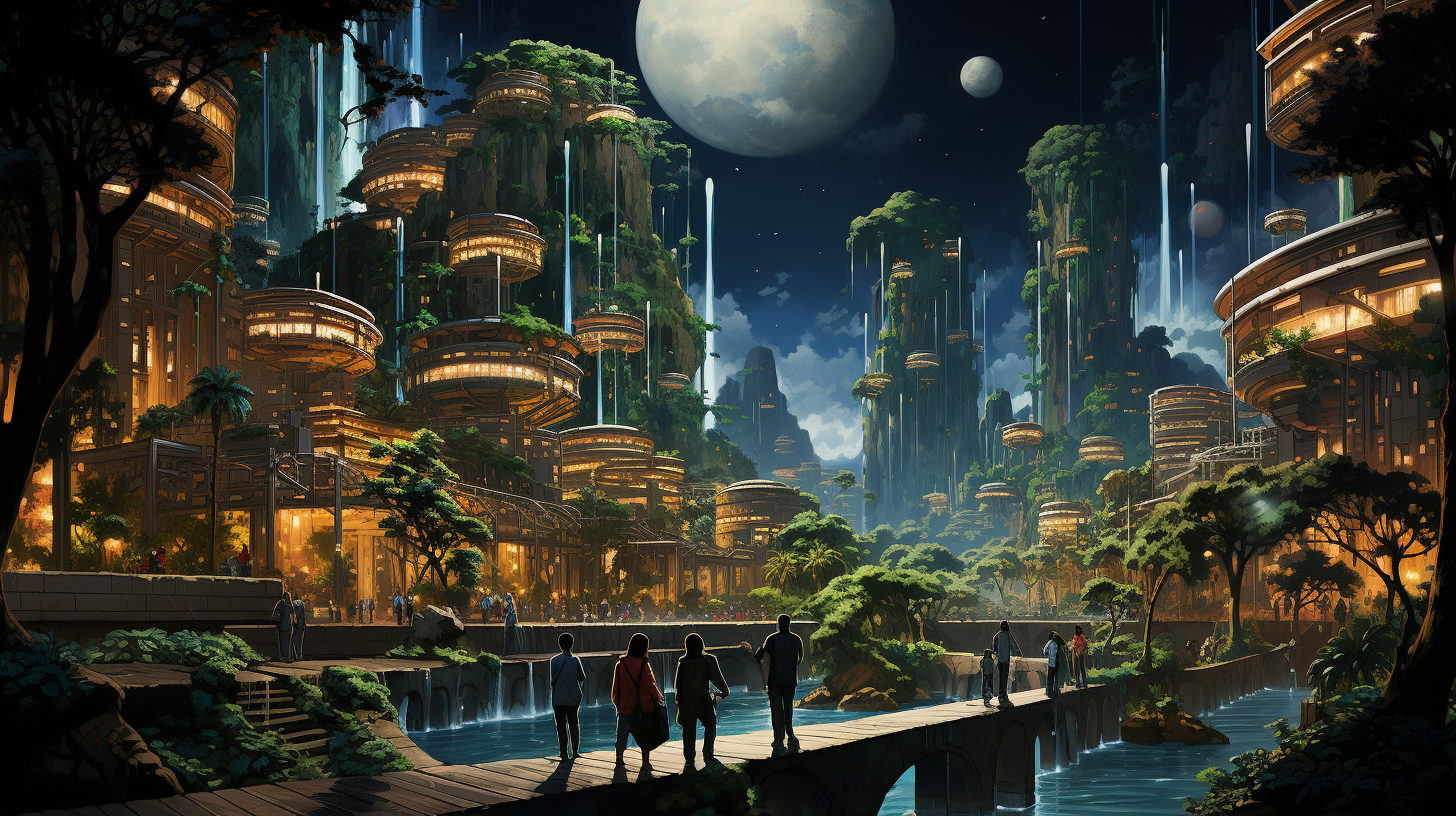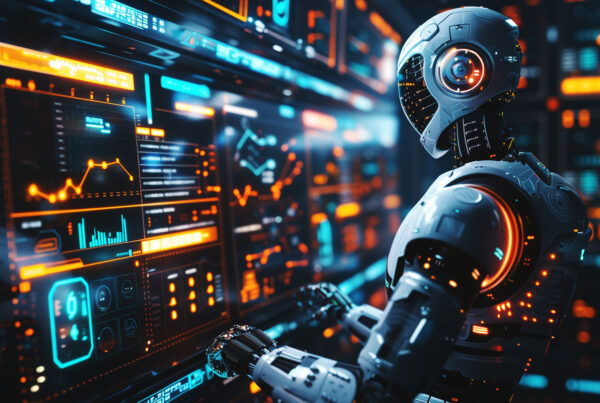
From Sketches to Landscapes: How AI is Defining the Future of Digital Scenery
As technology has advanced, so has our capacity to create and recreate reality. One of the most enchanting advancements has been the evolution of digital scenery. Today, the synthesis of art and technology is truly personified through AI-generated landscapes, offering a glimpse into both the familiar terrains of our world and uncharted territories of virtual realms. But what does the future hold for these digital vistas?
Table Of Contents
Understanding AI Landscapes
Benefits of AI-Driven Digital Scenery
The Power of Generative Adversarial Networks (GANs)
Applications of AI Landscapes
AI Collaborating with Human Artists
The Ethical Dimension of AI Sceneries
Challenges and Limitations
The Road Ahead: Predictions for the Future
Conclusion
Understanding AI Landscapes
Artificial Intelligence (AI) has been the cornerstone of several modern marvels, and digital art is no exception. AI landscapes refer to the digital topographies generated through machine learning algorithms. These algorithms analyze thousands of real-world images to create intricate and detailed sceneries that can either mirror the beauty of natural landscapes or depict surreal, imaginative terrains.
This evolution in digital artistry not only enhances visual content but also revolutionizes storytelling, enabling creators to convey emotions and narratives through dynamic and engaging environments. The integration of AI in art paves the way for unprecedented creativity, offering a blend of technical precision and artistic freedom. As this technology advances, it promises to unlock new dimensions in art, making complex and breathtaking landscapes more accessible to artists around the globe. This synergy of AI and creativity is shaping the future of digital landscapes, making it an exciting time for both artists and art enthusiasts.
Benefits of AI-Driven Digital Scenery
Imagine a world where movies or games no longer rely on real locations or extensive CGI for their breathtaking views. With AI-driven scenery:
- The Realism and detail achieved are unparalleled. From the reflection of light on water to the movement of leaves, everything can be replicated to perfection.
- It’s Efficient and time-saving. What used to take days can now be achieved in hours, giving creators more time to focus on storytelling.
Moreover, this technology democratizes the creation process, making it accessible to independent filmmakers and small studios, not just big-budget productions. It fosters innovation, allowing for the exploration of fantastical worlds that were previously impossible to visualize. The adaptability of AI-driven scenery means it can be customized to fit any narrative, enhancing the viewer’s immersion and emotional connection. Additionally, it reduces the environmental impact associated with on-location shoots, aligning with sustainable production practices.
This shift towards AI in digital scenery is not just a technological advancement but a revolutionary change in how we create and consume visual media, offering endless possibilities for future projects.
 The Power of Generative Adversarial Networks (GANs)
The Power of Generative Adversarial Networks (GANs)
At the heart of AI landscapes lies a powerful neural network called the Generative Adversarial Network (GAN). It operates on a system of two networks, the Generator and the Discriminator, constantly competing and learning from one another. The result? Hyper-realistic digital images can sometimes be indistinguishable from photographs.
This groundbreaking technology is not just transforming the field of digital art; it’s revolutionizing how we approach design, architecture, and even fashion. By enabling the rapid prototyping of visuals, GANs significantly reduce the time and cost associated with creative processes. They also open up new avenues for personalized content creation, allowing for the customization of designs to suit individual preferences with unprecedented precision.
Furthermore, GANs are instrumental in advancing machine learning research, offering insights into the capabilities and limitations of AI. Their ability to generate lifelike images from textual descriptions alone heralds a new era of content creation, where the lines between the real and the artificial become increasingly blurred. This technology empowers creators, pushing the boundaries of imagination and setting new standards for realism and creativity in the digital world.
Applications of AI Landscapes
Video Games: As game worlds become more expansive and players demand more immersive experiences, AI landscapes can fill in the gaps, creating realistic worlds or fantastical terrains that evolve in real time.
Virtual Reality: VR relies heavily on the creation of realistic or imaginative landscapes. AI can make these worlds richer and more interactive.
Film and Animation: AI can assist in generating detailed backdrops or alien planets, making the pre-production process smoother and more cost-efficient.
AI tools like video to text conversion, sophisticated AI voice cloning, and the ability to add text to video content offer an extra deep layer of immersion. They allow developers to transform visual elements into a written format, clone, and tweak voice sounds for virtual characters, or add textual layers to VR landscapes, thereby enhancing the players’ engagement.
 AI Collaborating with Human Artists
AI Collaborating with Human Artists
The dialogue around AI often centers on the machine vs. human narrative, but what if they could work hand in hand? We are witnessing a surge in collaborative pieces where artists utilize AI to generate basic structures of landscapes and then add their personal touch. This synergy harnesses the computational power of AI and the emotional depth of human creativity, birthing artworks that are both intricate in detail and rich in sentiment. It’s not a competition but a beautiful confluence of man and machine.
This partnership extends beyond the canvas, influencing music, literature, and even fashion, where AI-generated patterns meet human design. Such collaborations are breaking down barriers, challenging the traditional boundaries of art, and opening up new realms of possibility. They encourage a cross-disciplinary approach, blending science and art in ways that were previously unimaginable. This fusion not only accelerates the creative process but also enriches it, allowing artists to explore and express complex themes with greater depth and nuance.
Moreover, it democratizes art creation, making sophisticated tools accessible to a broader range of creators, thereby fostering a more inclusive artistic community. As AI continues to evolve, its role as a collaborator rather than a competitor will likely become more pronounced, redefining creativity and artistic expression in the digital age.
The Ethical Dimension of AI Sceneries
While AI landscapes promise immense potential, they also bring forth ethical concerns. The line between original human creations and AI-generated content can blur, leading to debates about copyright, originality, and authenticity in the world of digital art.
These discussions extend to the implications of using AI in creating art that closely resembles existing works, potentially infringing on intellectual property rights. There’s a growing need for clear guidelines and regulations to navigate the complex interplay between AI advancements and creative rights. Moreover, the accessibility of AI tools raises questions about the dilution of artistic skills and the value of human effort in the creative process. It’s crucial to foster a culture that respects both technological innovation and the irreplaceable human touch.
As we venture further into this new frontier, the art community must engage in open dialogues to establish ethical standards that encourage innovation while protecting the integrity and livelihood of artists. Balancing these aspects is essential for ensuring that AI serves as a tool for enhancing human creativity, rather than diminishing it.
Challenges and Limitations
Like any technology, AI landscapes are not without their limitations. There’s the challenge of ensuring the software doesn’t perpetually recreate the same types of scenes. Also, while GANs can generate intricate details, they sometimes lack the emotional depth and nuance that a human artist might bring to a piece.
Moreover, the integration of AI in creative processes raises questions about the authenticity and originality of the artworks produced. The potential for AI to inadvertently copy existing works poses significant copyright issues, complicating the legal landscape for digital art. Additionally, the reliance on vast datasets for training these models can introduce biases, affecting the diversity and inclusivity of the generated landscapes. There’s also the technical barrier; mastering these tools requires a blend of artistic skill and technical knowledge, potentially limiting access to a narrower group of creators.
Furthermore, the environmental impact of running powerful AI algorithms is a growing concern, highlighting the need for sustainable practices in the development and use of AI technologies. Addressing these challenges requires a collaborative effort among technologists, artists, and policymakers to ensure that AI enhances rather than diminishes the creative landscape.
 The Road Ahead: Predictions for the Future
The Road Ahead: Predictions for the Future
Seamless Integration with Augmented Reality (AR): As AR technology improves, AI landscapes can be used to change our real-world surroundings in real-time.
Personal AI Landscape Designers: Imagine software that can create a landscape based on your mood or preferences – a calming beach setting, a bustling cityscape, or a tranquil forest.
Education and Training: From historical recreations to depictions of other planets, AI landscapes can serve as interactive tools for education.
Conclusion
The symbiotic relationship between AI and digital artistry represents a new frontier in the realm of creativity. As we stand on the cusp of more technological breakthroughs, the horizon looks promising for AI landscapes. The fusion of machine precision and artistic endeavor might just redefine our understanding of scenery, both digital and real.
The integration of AI into the world of digital artistry has ushered in a transformative era that melds the boundaries between reality and imagination. This symbiotic relationship between technology and artistic creativity represents not just a new frontier, but perhaps a new paradigm in how we conceive and engage with landscapes and environments. As technology continues to evolve at an unprecedented pace, we find ourselves standing at a significant crossroads. The horizon indeed looks promising for AI landscapes, but it’s more profound than just digitized vistas. It’s about the convergence of human emotion, memories, and perceptions with the seemingly limitless potential of artificial intelligence.
15,000+
Design Assets
- Instant Access
- Free Content Updates
- Constantly Growing Library
- Unlimited Downloads
- Simple Licensing


By Dreamstale
Get creative with our free & premium design resources. Download a vast collection of graphic design materials, such as graphics, sublimation designs, icons, textures, stock photos and more.
Plus get access to Photoshop tutorials & inspirational articles that will spark your imagination.

 The Power of Generative Adversarial Networks (GANs)
The Power of Generative Adversarial Networks (GANs) AI Collaborating with Human Artists
AI Collaborating with Human Artists The Road Ahead: Predictions for the Future
The Road Ahead: Predictions for the Future


